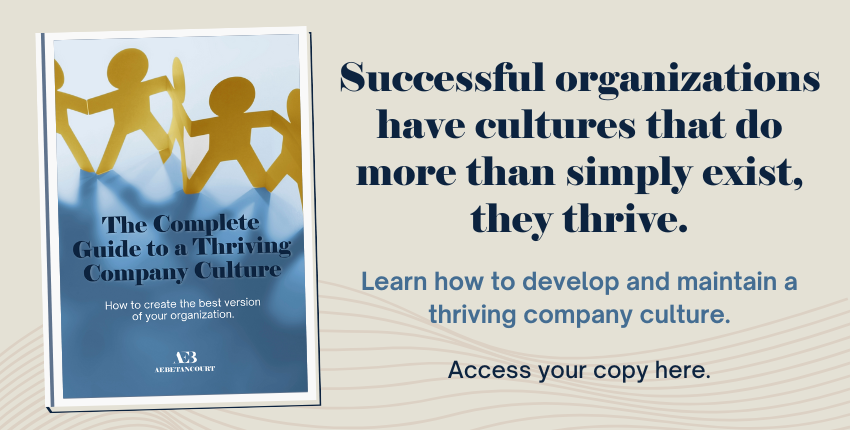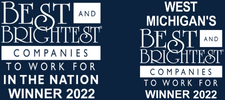The term “Great Resignation” created a lot of buzz in 2021 – and rightfully so. The level of job quits continued to trend upward throughout 2022 where the monthly average sat at 4.2 million people voluntarily quitting. The reasons spanned several professional and personal reasons, but the last couple of years have been all about quits and reshuffles. Despite organizations still facing the struggle of finding perfect-fit hires to fill the positions left vacant by their star employees, many business leaders see the silver lining amidst the chaos as an opportunity to adopt innovative strategies for retaining and attracting talent.
According to labor market data, 2022 overall saw positive job growth. However, as inflation rates remained uncomfortably high, the volume of job hires slowly decreased. The least fluctuating metric was the Labor Force Participation Rate. It remained at just above 62%, only moving slightly from month to month.
The current market is still described as ‘tight’ and the past couple of years has taught us not only how quickly situations can change but reinforced the value of awareness, preparation, growth, and transition. To be competitive, growing organizations will need hiring and retention strategies that incorporate a focus on areas that range from improving company culture to redefining work flexibility, and providing new learning opportunities.
Attracting and retaining top talent is a main driver that continues to reshape the economic landscape and ongoing business. During a tight hiring market, organizations need more emphasis on retaining and developing their own employees to reduce turnover while also creating a desirable workplace for new employees.
When it comes to navigating the current market and understanding employee expectations, organizations should start by reconsidering human capital from the individual worker’s perspective. Research shows that approximately half of an individual's lifetime earnings can be attributed to skills acquired through on-the-job experiences. This percentage is notably higher for individuals lacking college degrees. Essentially, for those with lower initial salaries, a significant portion of their lifetime earnings is a result of accumulated experience. This concept is termed "experience capital," and individuals who purposefully diversify their skills and experiences enhance their experience capital, leading to higher earnings over their professional lifespan.
The number one way individuals build greater experience capital and boost their lifetime earnings is by moving jobs. Twenty-year tenures with a single company are now a rarity. Making strategic career moves and learning along the way is the best, and often the only, strategy for people looking to achieve higher earnings over the course of their working life. With that being said movement has always been part and parcel of the labor market but especially so when the market tightens. The average worker changes jobs every two to four years, and that was before the Great Resignation.
In a highly competitive labor market, it’s important to update your hiring and recruitment practices so you don’t continuously lose out on talented candidates or repel high-quality employees. But it’s become abundantly clear: Employees are in the driver’s seat of the hiring process. To attract and retain more qualified talent in this tight labor market, you need to rethink your hiring policies and consider the priorities of the workforce.
The Shifting Priorities of the Workforce
Companies can only accelerate their efforts for attracting and retaining talent once they pinpoint the main reasons, so many employees are resigning in the first place.
The way we live and work has fundamentally changed. That being said, individuals who excel at their jobs do not decide to quit out of the blue. Their desire to seek better futures is often spurred by deep dissatisfaction with their working conditions.
Shifting priorities of the workforce are not something out of the ordinary. An increasing number of professionals realize they are people before they are workers and that their job is only one aspect of their lives. We are at a pivotal shift in work-life balance and many professionals are reassessing their career aspirations and long-term goals.
Different surveys show burnout, the behavior of the employer, low wages, lack of benefits, and poor work-life balance were the top reasons people handed in their resignation letters at the start of the Great Resignation. And they have remained the top reasons given. Furthermore, a lack of corporate vision and misaligned management styles have always been among the leading reasons behind a high employee turnover rate.
This should encourage hiring managers and HR professionals to closely review their methods for attracting talent, as well as their total talent acquisition process. It’s not enough to just understand why employees leave but also what compels them to stay. After all, what motivates talented individuals to stay with your organization are the same motivations and incentives that will help you attract new talent.
Attracting Talent Amid a Tight Labor Market
Embracing alternative work environments
The boundaries of the traditional work environment have been shattered. Working from home, in some capacity, has become a new norm for many professionals. And while remote and hybrid work isn’t without its own set of challenges, experts have identified that for many employees it contributes to a better work-life balance. Studies also show that it can significantly increase employee engagement and productivity. Hence, hiring companies should consider adopting some form of a remote or hybrid work model to attract their perfect-fit hires.
Providing development opportunities
Business leaders and hiring managers must make sure to exhibit their interest in their employees’ personal and professional development.
Many highly qualified individuals choose to quit because they feel stagnant in their careers. Hiring companies can take advantage of the situation by investing in the growth of their workers and providing them with development and career progression opportunities. Organizations that want to see their employees learn new skills and help them achieve their goals are likely to attract more quality candidates.
Reinforcing your workplace culture
As more organizations adopt hybrid work models, fostering a workplace culture that prioritizes innovation and growth has become more challenging. However, business leaders and HR professionals must overcome these challenges and ensure their online work culture aligns with their in-person work culture.
Showing their commitment to upholding company values can also help hiring companies find and recruit new talent.
Offering better benefits
High levels of work-related stress and anxiety often cause burnout, which can even lead to depression. As a higher number of professionals are struggling with their mental health and work-life balance, hiring companies should consider offering a few perks to their new and existing employees that address their evolving needs.
For instance, along with revising their benefits, organizations must also encourage employees to seek counseling when needed and provide them with paid time off when these services are used. An attractive compensation package is also bound to draw the attention of active job seekers.
Working with a recruitment firm
Last but not least, hiring managers and HR professionals should consider working with a reputable recruitment firm to fulfill their employment needs. Executive search firms such as AEBetancourt have a structured talent acquisition process that enables hiring companies to find the best candidates for the job.
Outsourcing the hiring process is usually a good idea, as experienced firms can fast-track the hiring process by sourcing, interviewing, screening, and shortlisting potential candidates for open positions. They can also help hiring companies create a more human-centered employee value proposition or EVP.
Retaining Talent in a Competitive Labor Market
It is critical for business leaders and hiring managers to bridge the gap between what employees want and what their company can offer. Here are some useful tips that may come in handy.
Retaining talent in a competitive environment means organizations must treat employees as their number one priority. Organizations should consider where they can add a level of personalization to the employee value proposition and how they can create strategic engagements that promote learning opportunities and pathways to meaningful career development. By providing chances to broaden their experience and increase skills, employees are able to earn more over their lifetime — and when employees feel like they are being invested in, they will be more willing to invest in their employers.
It typically takes far longer (and costs more) for an organization to find a perfect-fit hire than stopping an excellent employee from giving their two-week notice. Therefore, employers must adopt strategies to boost employee retention by giving them what they have come to expect: a flexible work environment.
Top business leaders now realize that flexibility is the key to higher retention. Remote or hybrid work models and benefits that are personalized for each employee like training and development, career planning, or flexible hours, can allow employees to enjoy a better work-life balance.
Employees are looking for organizations that respect and value them beyond their ability to generate revenue. One of the simplest ways that large corporations and small enterprises alike can do this is to frequently commend employees for their achievements. When employees feel valued by their managers and higher leadership, they are more likely to stay and improve their performance.
Yet, the easiest way may be to simply be available to your employees for meaningful conversations that allow for time to discuss our lives beyond the office. This means that leaders need to pause and really listen to their employees.
Speaking of meaningful conversations, connecting with your team members personally and professionally is a great way to boost morale and inspire employees.
Social connections can have a positive impact on productivity. In addition, companies that invest in building long-lasting and meaningful relations with their employees usually experience a low turnover rate. Solidifying this bond is even more crucial when employees are working remotely and have to rely on text, calls, and digital conferencing platforms to communicate with their supervisors and colleagues.
Ultimately attracting and retaining talent is about meaningful employee engagement. This means building a positive company culture that prospective employees will desire, and then delivering on those promises. Learn how your organization can develop a culture that does more than survive but actually thrives by accessing the guide below.


.png)





